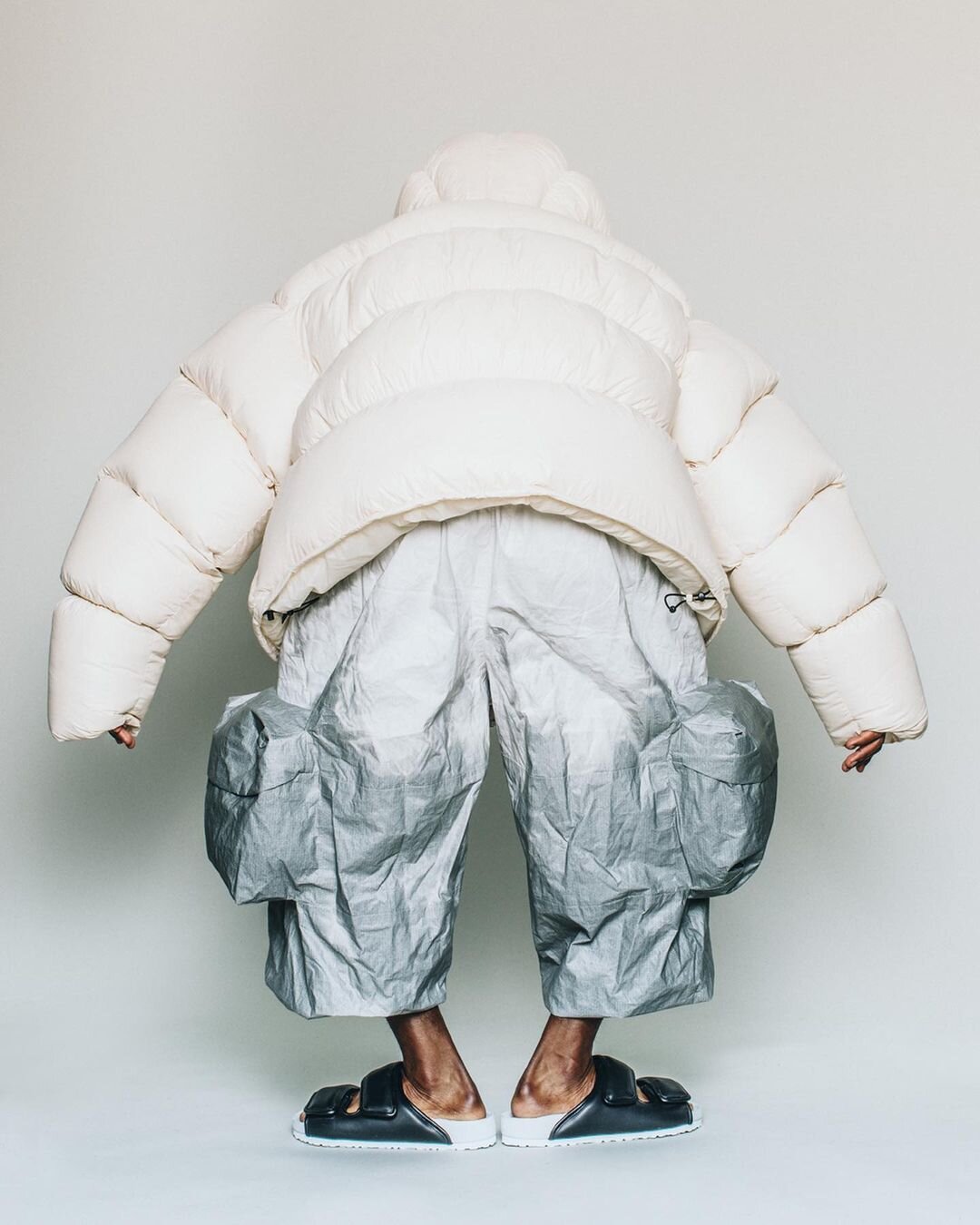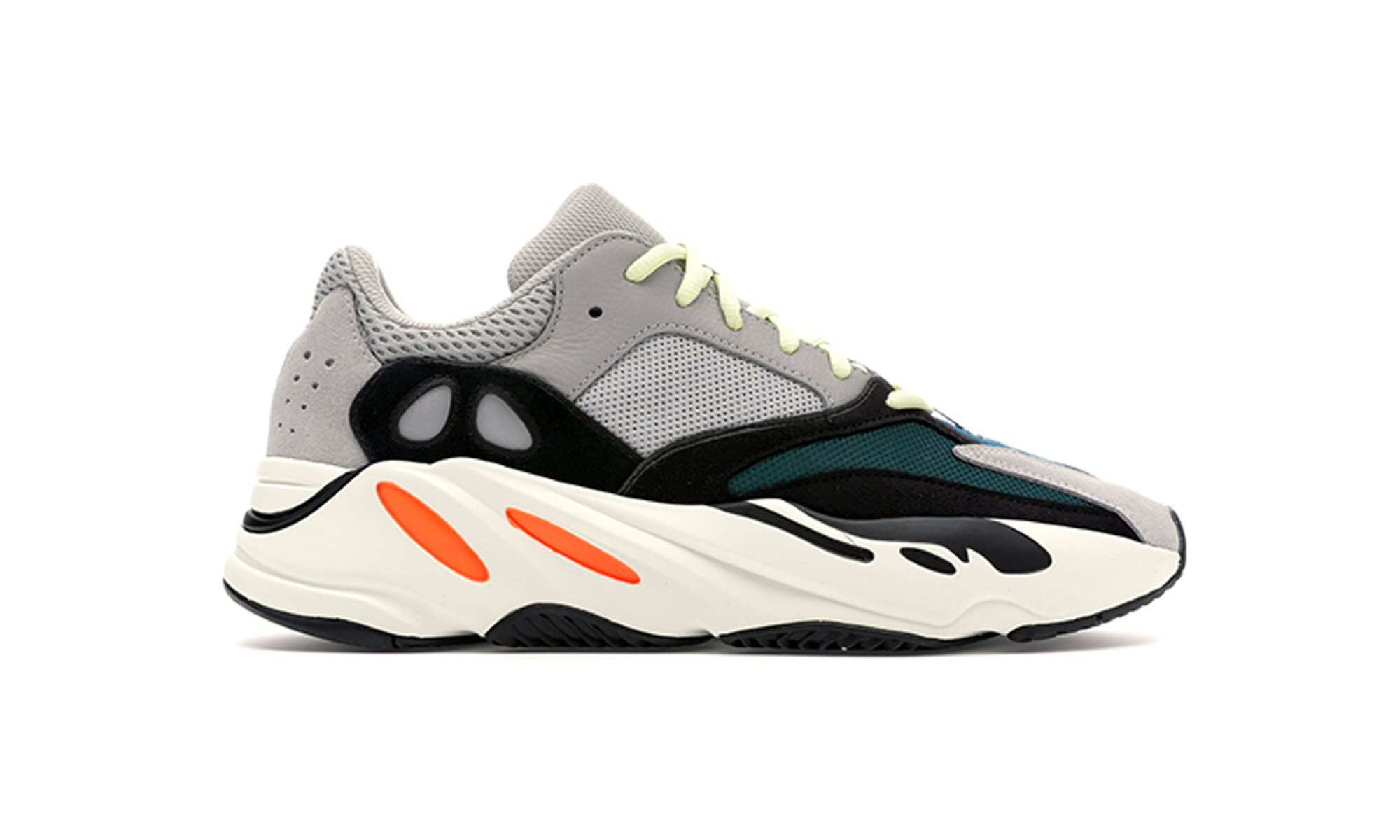Checking In: Ding Yun Zhang
Utility Is The New Luxury
Through an assortment of exaggerated outerwear, futuristic silhouettes and an eye for innovative materials, Ding Yun Zhang has carved a path for himself in the ever-saturated pool of young designers. By combining traditional function with a refined and delicate sense of comfort, a look through his runway ensembles will transport the viewer to an ethereal realm; one that approximates something torn between science fiction and the rituals of an indigenous tribe.
While highlighting key environmental and economic challenges, the necessary functionality spread throughout his work is evidence that Zhang envisions his own version of Utopia; a sustainable way of living where utility is the new luxury. After completing an undergraduate degree and an MA from the world-renowned Central Saint Martins, it’s safe to say that Ding Yun Zhang has a lot resting on his shoulders - not to mention a working professional relationship with Kanye West.
Hi Ding, what have you been up to this week?
I’ve just been keeping busy with organising production for my brand, while working on the Birkenstock collab we just launched.
Let’s start at the beginning. Could you run us through your childhood years? What influences were you surrounded by growing up?
Growing up in China, I was surrounded by classmates and friends who loved sports and liked manga and anime. I used to sketch anime posters and sell them to buy manga books. Before coming to the UK, I was inspired by Kobe basketball sneakers by the age of 12 and was constantly sketching and imagining what the next Kobe shoes would be like. I wasn’t quite into fashion yet, but I was really interested in Kobe and Jordan sneakers.
What led you to pursue fashion and ultimately end up at CSM? Was there a specific moment that sparked your interest?
When I was young, I was into traditional Chinese ink painting, pencil drawing and sculpture while studying fine art. Traditional Chinese culture’s strong connection with art and craftsmanship sparked my interest in art in the first place. Then, I began to learn about clothing techniques from traditional Chinese dress, like cheongsam [a high-necked, close-fitting dress] for example. The reputation of the college got me interested and it seemed like a haven for great designers. My Mum is also into fashion and regularly looks at CSM’s collections, so that was also part of my influence to study there.
Your BA collection consisted of more recognisable military silhouettes (parkas, tactical vests) and Boro techniques. Where did these material ideas come from?
I'm interested in exploring the difference between clothing selected for personal style, and clothing worn out of necessity. I studied a book of photographs that captured the day-to-day clothing of the people of Zimbabwe. These people of modern Africa are less concerned with what their clothes say about them as people, yet the result is aesthetically more interesting and dimensional. The way I formulate these ideas is by studying material, colour and layers; ideas of putting design and different cultures with each other at the same time for clothing that can be worn without any rules.
When we compare this to the quilting and padding on exaggerated shapes that outlined your MA presentation, how did your ideas mature from one to the other? Could you map out your design journey between the two?
I’m always inspired by how clothing’s purpose can inform its appearance, and my BA collection was focused on Zimbabwe rural workwear. However, for my MA collection I chose the context of extreme sports which meant a change in function, materials and silhouettes. The concept is the same, but just expressed in a different context with consideration of functionality and protecting from harsh weather conditions.
How do you view the relationship between shoes and clothes during your design process? Do you approach them in a different way or is it a seamless transition?
Because I’ve been sketching shoes since [age] 12, visualising shoe designs comes more naturally to me - being able to sketch and understand the details of the design - whereas when designing clothes I find it more helpful to work in 3D to bring the design process forward. When designing my clothing silhouettes it’s great to imagine them with a shoe silhouette to complete the feeling or style of the outfit.
Could you tell us your 5 favourites shoes of all time?
Air Yeezy 2 and my AW18 snow boot… Kobe 6, Yeezy 700, Jordan 4.
A prominent research pool for you is one of underrepresented ethnic groups. Why does this resonate so strongly with you? Is it something that you plan to always take as a keystone for your designs?
I’m attracted to people that live in harsh conditions because of its effect on the appearance of their clothes and culture. It inspires me to explore ways to create clothing that protects the wearer from these conditions. The way people live, the clothes they wear and what they eat are all part of that lifestyle, and certainly [will] be something I’ll use as inspiration in the future.
What position do you think fashion designers hold in the world of environmental responsibility? How do you incorporate sustainable practices within your workflow?
With respect to designers being sustainable, I think we have the most agency when it comes to materials. I’m trying to innovate alternatives to leather goods, combining different man-made materials that together can mimic the properties of leather. Reusing old dead stock nylons for garments and accessories - by re-dyeing and processing - is a method I also use to reduce synthetic material waste. Fashion companies as a whole should implement designer knowledge of sustainable fabrics and longevity of the products, with improving supply chains to reduce the impact of fashion.
Please tell us about a book, film, image or piece of music that you’ve been connecting with recently.
I’ve been recently watching Alien 1979 again, to catch up on my childhood memories.
Let’s touch upon Kanye briefly. Has it been tough to balance the desires of one of the world’s most successful people with your own personal expression? Have you felt under pressure to design according to his taste?
Designing with Kanye was a free and limitless experience, and I didn’t feel any pressure to design in a way that wasn’t true to myself. He gave me the liberty and responsibility to express myself, and working with him was a great experience that taught me a lot. This appreciation for my taste and vision was how Kanye, Steven Smith and I worked together to design the Yeezy 700s.
And lastly to the future – What are your plans going forward and how has the pandemic affected these?
I’ll be steadily growing my brand and selling pieces from my collection, and perhaps [I will] release some collaborations in the future. Sourcing and production has been made difficult because of the pandemic; some suppliers have closed down or changed how they do business and looking at fabric and trimmings through a screen can’t compare to seeing them in real life.
Despite having only just begun his journey as a designer, Ding shows a down-to-earth maturity that speaks volumes for both his humility and his temperament. He remains grounded by the functional needs of everyday people and the influence this has on the form of his garments; a well-founded base that will serve as an inspirational pool for the foreseeable future.
With a history of interests ranging from basketball sneakers and traditional Chinese dress to modern African workwear and extreme sports, Ding unites these diverse sources in his search for functional bliss. Now counting an astutely executed Birkenstock collaboration and a selection of Yeezy footwear within his portfolio, the stage is set for Ding to follow his archetypal education with a blistering design career. One thing is for sure – you will find us at the top of the list of those wanting him to succeed. You can keep up with Ding’s work over on Instagram.
Words by Rob Hallett






